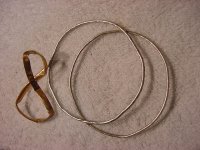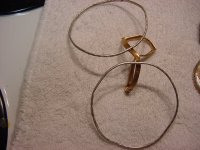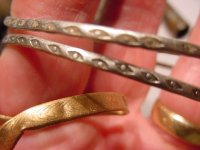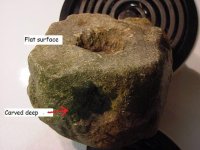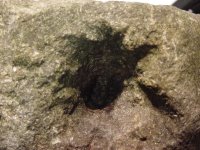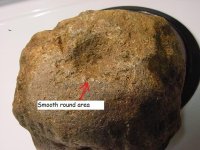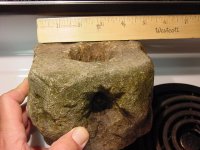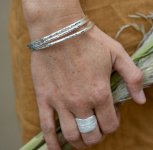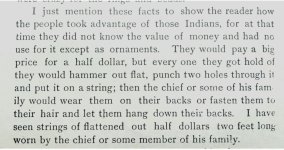So back in 2007 I dug two silver bracelets at a property that was part of an earlier 1799 plantation property.
They were dug about 100 yards apart. My detecting buddy at the time dug a third one.
A light bulb went off this week that perhaps they could be Indian made?
On this same property there is a creek where I’ve dug a lot of CW relics and a few arrowheads in the past. I ran into a guy one day that was searching for arrowheads by that creek. He told me that across the road was a hill that was known as “Indian Hill” because of all the arrowheads that have been found there. I also found a large square stone about 5” across that had different sized cupped out areas on each side. I was told it was used for grinding things.
Anyways, my question to you is:
Could these silver bracelets have been made by Indians?
There are no marking inside, just the design you see on the outside.
Any input would be greatly appreciated. I know nothing about Indian artifacts.
Thanks,
MM
They were dug about 100 yards apart. My detecting buddy at the time dug a third one.
A light bulb went off this week that perhaps they could be Indian made?
On this same property there is a creek where I’ve dug a lot of CW relics and a few arrowheads in the past. I ran into a guy one day that was searching for arrowheads by that creek. He told me that across the road was a hill that was known as “Indian Hill” because of all the arrowheads that have been found there. I also found a large square stone about 5” across that had different sized cupped out areas on each side. I was told it was used for grinding things.
Anyways, my question to you is:
Could these silver bracelets have been made by Indians?
There are no marking inside, just the design you see on the outside.
Any input would be greatly appreciated. I know nothing about Indian artifacts.
Thanks,
MM
Amazon Forum Fav 👍
Attachments
Upvote
8



